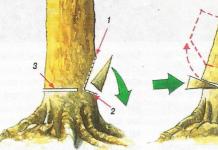Several centuries ago, on any suburban area, there were flower beds with fragrant mignonette. The aroma of this plant spread throughout the area, so at first glance, modest flowers enjoyed unprecedented popularity and were in almost every park or garden. They were used as decorations not only on the table, but also in the wardrobe.
Fragrant mignonette allows you to get rid of migraine attacks, for this you just need to inhale the tart aroma of the flower. No wonder its name is translated as “calm down”.
Fragrant mignonette: growing from seeds
To acquire this unusual flower, you do not need to perform any special gardening rituals. It is enough to purchase seeds and plant them correctly. In order for the seedlings to sprout well, it is better to start growing in early April.
Fragrant mignonette, a photo of which demonstrates its simple, but at the same time unusual beauty, loves nutritious soil. To prepare it, you need to mix one part of the earth and humus with 0.5 part of the sand.
Seeds sprout in about 14 days. As soon as the first petals appear on the shoots, it is time to transplant. Peat pots are best for this.
Transfer
Before moving a plant to a new location, pay attention to a few nuances. A transplant rarely causes trouble for a flower. However, remember that it is only necessary to move the plant from one container to another with a clod of earth in which there are already formed roots. If you damage the root system of fragrant mignonette, it will grow poorly or wither away altogether.
Sprouts can be planted in open ground already in early May (depending on weather conditions). Nevertheless, it should be borne in mind that the flower is very fond of light, so it is best to choose the sunniest place for it in a suburban area.
If you leave the plant in the shade, then it will develop just as quickly, but its stems will begin to stretch a little, trying to get the right amount of sunlight.

When growing fragrant mignonette, do not water it too often. If the flower grows in high humidity conditions, its root system may begin to rot. Therefore, it is very important to ensure that the soil is fertile enough. The plant does not tolerate acidic soil well. Of course, it will not die in such conditions, but it will develop much more slowly.
It is best to feed the flowers of mignonette fragrant, photos of which show what a grown flower looks like, at least 1 time per month. For this, it is recommended to use mineral supplements.

In order for the flower to develop correctly and quickly become a decoration for a suburban area, it is necessary to periodically loosen the soil. Be sure to keep a lot of weeds away from the plant.
Features of planting in open ground
Some experienced gardeners plant mignonette fragrant seeds in the garden in late April. Do not worry about cold weather, as this plant can easily tolerate low temperatures.
For planting, the seeds are buried approximately 5 cm in the ground. It is best to immediately form even rows in which the flowers will grow in pairs. There should be at least 1 cm between shoots, then an even and beautiful "carpet" will be formed from the mignonette.
In order for the plant to take root well, you must first prepare the soil. To do this, in the fall, it is recommended to thoroughly dig up the beds and fertilize it thickly with humus.
Be sure to sprinkle sand on the ground immediately after planting the seeds. This is necessary so that a hard crust does not form on the surface of the earth, which will prevent the seedlings from breaking through.

When the shoots grow up to 5 cm, experienced gardeners thin out the flowers so that there is up to 15 cm between the plants.
How to care?
This plant is not capricious. If you plant a flower in fertile soil and make sure that the root system does not become waterlogged, then mignonette will not cause trouble. The main thing is that the plant receives the right amount of light, minerals and nutrients.
Subject to severe frosts in the cold season, mignonette will not suffer from frost. However, during a thaw, the plant will receive too much moisture, which can lead to root rot.
Reseda should be watered in moderation and at regular intervals. Mineral fertilizers are not recommended to be applied quite often, once a month is enough.
If you want to grow a flower at home, then it is enough to use fertile soil, to which it is recommended to add a small amount of peat. There must be drainage at the bottom of the flower pots. Otherwise, the delicate roots of the plant may start to rot.

If mignonette is grown at home, it must be placed in the sunniest place. However, if the plant is on a windowsill or on a balcony, then it needs to be fed more often - once every 14 days.
Reproduction of mignonette
Like many flowers, this plant produces seeds that can be used to grow mignonette later. If we talk about reproduction by transplantation, then we should once again note the fragile root system of the mignonette. When the rhizome is separated or traumatized, the flower most often dies.
Diseases and pests
If we talk about potential pests and diseases, then the fragrant mignonette flower is extremely rare. However, it will have to be protected from caterpillars and butterflies, which are very fond of feasting on a fragrant plant. Use any quality insecticide to get rid of pests.
The greatest danger to mignonette is only the increased moisture content.
Application of reseda
As mentioned earlier, this plant is distinguished not only by its fragrant aroma, but also by its beneficial properties. Back in ancient Rome, people discovered that mignonette helps to cope with heart disorders. The plant helps calm the nervous system and has a beneficial effect on frequent headaches that turn into migraines.

Centuries ago, a dye was made from yellow mignonette, which was used to give a yellow color to clothes. Literally recently, this plant was also used for these purposes, but after the appearance of artificial colors, the need for this disappeared. Now only very delicate fabrics, such as silk, are dyed with mignonette.
Since mignonette has a pleasant aroma, it is planted along garden paths, next to gazebos and swimming pools. If you plant flowers on the balcony, then every morning you can enjoy not only the fresh country air, but also the amazing smell.
Cut flowers of mignonette retain their appearance for a long time, therefore mignonette is often used when creating bouquets.
For its rare extraordinary aroma and unusual shape of leaves, fragrant mignonette is appreciated among flower growers. A perennial grown in Russia as an annual. Southern Europe is the birthplace of mignonette. And "fragrant" came to us from North Africa.
This flower has inspired many poets and writers with its “all-pervading scent” (O. Henry “Roses, mignonette and romance”). 300 years ago, not a single Russian estate could do without flower beds with mignonette, which filled parks and gardens with a heady aroma.
There are about 50 species in the genus of mignonette. It reaches a height of 30 cm, inflorescences with very small flowers, collected in lush clusters.
Mignonette - one of the plants that came to us from antiquity, is mentioned on clay tablets and papyri of ancient Egypt, dates back to several thousand years BC. From here, exuding a bright aroma, the plant with numerous traders following caravans is widespread in Iran, Turkey, Persia.
Legends say that Napoleon himself, during his Egyptian campaign, searched for the sowing material of mignonette in the steppes and sent them to Josephine, who was a fan of aromatic herbs and fragrant plants. Whether this story is fiction or took place in history, at the moment it is very difficult to verify. But there is a historical fact that it was Josephine who brought into fashion the cultivation of various aromatic spices, herbs and flowers in front gardens and in the form of potted plants. Such a new fashionable wave swept across all prim Europe, and even the most delicate white-handed women took up home landings. During the reign of Queen Victoria of England, mignonette was an adornment of almost all houses in London.
The Latin name for reseda is translated as "return to the previous state", "heal", "heal". It has been used in herbal medicine since the days of ancient Roman medicine. Among the people, mignonette fragrant is used for heart diseases, as a diuretic and diaphoretic medicine.
In ancient times, mignonette was used as a means of relieving migraines (constant headache), inhaling the aroma of dried bouquets or freshly cut flowers, patients noted the removal of pain in various parts of the head.
Mignonette flowers are not beautiful and are quite simple, but many species are propagated as decorative ones because of their pleasant, fragrant aroma. Essential oils are produced from the flower, which are used in perfumery. The oil is quite fat and is used in medicine and paint and varnish industry.
Honey obtained from nectar and mignonette pollen is considered one of the best, it is compared to linden honey in its properties and aroma. Bees collect wonderful glassy nectar and pollen of an interesting copper-red color. Reseda is the most valuable and favorite autumn honey plant by beekeepers. Bees collect more than 250 kg of honey from 1 hectare of a blooming field of mignonette. Daily consumption of 200 g of fragrant honey increases the body's resistance to diseases, improves the composition and quality of blood, and speeds up metabolic processes.
Best views
The flower varieties are bred for decorative purposes, so these specimens are not as fragrant as the original. In retail sale there is a wide range of inflorescences of various colors.

Fragrant or odorous is one of a variety of species that are widespread throughout the world:
- 1 Goliath - inflorescences in the shape of a pyramid, painted in intense red shades.
- 2 Masha - large, orange-red inflorescences. Height 40 cm.
- 3 Victoria - brown inflorescences.
- 4 Ruby - the inflorescences are quite dense with shades of pink and copper.
- 5 Red Monk - inflorescences have a double color, red-green.
Yellow - common in most of the European part of Russia, grows in dry steppes with open grass cover, on open clay and gravelly slopes, reaches a height of almost 1 m, the color of flowers goes from sunny yellow to pale mint.
Yellow - a perennial plant, reaches a height of 1.5 m. Distributed from Europe to Central Asia. Flowers appear on a one-year-old plant (blooms in the second year), forming bright yellow saturated flowers, collected in dense brushes. This feature has found its application in the textile industry, for this they use the roots of the plant. Flowers are used as raw materials in perfumery to obtain essential oils.
Odorless - a flower of medium height (about 60 cm). Flowers do not exude aroma, the corolla is white. It has 2 types of leaves: the upper ones are divided into 3 parts and the lower ones without separation.

In the Mediterranean, another type of mignonette is common - white. It is a perennial about 1 m high. Flowers are small and white.
Growing and care
Fragrant mignonette is very fond of sunny places, although in partial shade it also feels great. The light will only affect the growth of the bush and the intensity of the scent during flowering. The growing season is from June to the beginning of the first frost. The flower grows well not outdoors, therefore it is often used to decorate balconies and terraces.

Reseda is planted so that the fragrance reaches its listener. So, you can choose a planting place near a terrace, a gazebo or a bench. Varieties of fragrant mignonette are divided in height and therefore it is rarely used, but it is used in the formation of borders.
The plant responds well to soil composition. Rich garden soils with a mixture of sand, expanded clay and peat will give a rich, fragrant harvest of mignonette. In the presence of acidic soil, lime and dolomite flour are added to it. Particular attention should be paid to the occurrence of groundwater on the site, the flower does not tolerate an excess of moisture.
Growing mignonette is not particularly difficult. Many gardeners plant seedlings in the spring for early flowering. This is done in greenhouses, boxes or pots filled with a nutritious soil mixture.
Seeds are sown in early April, 3-4 seeds in a standard 16 cm pot. When the growth of seedlings is 8 cm, the mignonette is thinned out, leaving only the strongest plants.

The tops of the seedlings are pinched over the 4th real leaf for the density of the bush and intense flowering. As the seedlings grow, the seedlings are hardened.
Saplings are placed in the designated place at the beginning of May. You need to be careful when transplanting a plant, mignonette does not tolerate transshipment well, so you must try not to damage the roots. From the moment of planting to flowering, it takes about 2 months.
You can prolong the fragrance of the garden by planting mignonette at different times. Re-planting the next year will not be required, the plant propagates by self-seeding.
Caring for the plant after planting consists in regular watering, loosening the soil and feeding. Reseda is not a whimsical enough plant. Watering in the hot summer, dry months is done as often as possible. Plant feeding is carried out 2 times in the period from the first appearance of buds at the end of the growing season with special complex mineral fertilizers.
Diseases and pests
Fragrant mignonette is practically not susceptible to diseases and attacks of insect pests. One of the problems can be an earthen flea, which affects a still very young, immature plant. These are black bugs making holes in the leaves of the mignonette, which leads to the loss of moisture and the drying of the leaf. Wood ash treatment will help get rid of them. Some species have been chosen by the caterpillar of the whiteworm butterfly, only insecticides will help get rid of it.
Due to strict rules and traditions, oriental women invented a kind of floral language, in which they communicated with their beloved, without fear of being punished. Each flower in such a dialogue had its own specific meaning, huge bouquets of assortment were made, telling whole love stories.
In the eastern tradition, it is considered important:
- time of flowers presentation (place);
- how the giver holds a bouquet (flowers up or down, a bouquet in his left hand or in his right);
- are there additional decorations in the form of decorative leaves;
- whether the thorns of the roses have been cut.
With the advent of the 19th century, flower correspondence became fashionable in the European part and in the Russian Empire, quickly occupying the niche of fashionable bouquets with semantic content, where each detail carries its own semantic load. In the language of the villages or the language of flowers, reseda is a symbol of deep, sincere affection, the beginning of falling in love, and in a bouquet it is a key acknowledgment of one's feelings.
does not amaze with color or shape of flowers, its modest greenish-yellow inflorescences are very modest, however, an unusually strong aroma provides the plant with the well-deserved love of flower growers - creators of fragrant flower beds and polysads. new inflorescences bloom. In flower beds and polisades, mignonette is planted, near the porch or gazebo. For balconies, reseda is combined with salvia, red pelargonium, petunia.
Reseda cultivation
Reseda is also appreciated as a balcony decoration. The height of the mignonette bush is up to 30 cm. Flowering, from the middle of summer, long and abundant.
He loves both partial shade and sunny places, on fertile loams with a slightly alkaline reaction, flowering is very lush.
Reproduction of mignonette
Reseda seeds are sown in a room from mid-March to April. They are planted in the ground at the end of spring, at a distance of 10-20 cm. Mignonette tolerates transplantation very badly; if the roots are damaged, it can die. Reseda seedlings, therefore, are grown in peat cubes or cups.
RELATED ARTICLES: Hello, dear readers of my site! Fragrant mignonette can be safely attributed to the group of nostalgic flowers, since now it is not often found on the sites. It is not known to many that it was still known to the gardeners of Ancient Egypt. even used as a ritual plant, archaeologists have found dried bunches of mignonette in the sarcophagi of the pharaohs.
So highly appreciated its pleasant aroma. Of the 50 species of mignonette, which grow, as a rule, in Asia Minor and Southern Europe, only enjoys wide popularity. Outwardly, this annual plant is unremarkable: it has an erect, branched stem 20 to 60 cm high with medium-sized oval leaves in the lower part. The top of the stem is an inflorescence, consisting of a large number of small, yellowish-green, reddish or pink flowers.
Their delicate scent cannot be confused with any other plant. The famous plant classifier Karl Liney himself called the smell of mignonette the scent of divine ambrosia. And you can enjoy it for a long time, mignonette blooms from July until frost.
Varietal mignonette is more ornamental than natural plants, although not always more aromatic. The most popular are the following varieties: - large inflorescences, yellow and pink flowers. - flowers are dark brown and bright red. - flowers are red, double. - copper-pink flowers. - the flowers are red-green.
In the garden, reseda is sown in mixborders - near gazebos, paths, terraces, benches, that is, in places where you can enjoy its aroma. It is great to install vases, hang pots with mignonette in places where the whole family gathers in the country.
It is possible on the balcony in boxes or on light window sills in pots. Previously, mignonette was widely used for winter and early spring flowering - for this it was sown in pots in the second half of July. It was also grown for summer bouquets, since mignonette inflorescences give them aroma and stand well in water. It should be remembered that all its species and varieties are photophilous and sufficiently cold-resistant.
Plants prefer sunny places, rich garden soil and cannot tolerate excess moisture. Growing mignonette is a snap. Most often, seeds are sown in a permanent place in early May. Seedlings appear in 6 - 8 days. When thinning, a distance of 7 - 10 cm is left.
The flowering of mignonette begins 2 - 2.5 months after sowing and continues until frost. To obtain early flowering, mignonette must be grown through seedlings. In the first half of April, they are sown immediately in pots, planted in a permanent place in the second half of May.
They are transplanted with a lump of earth, trying not to damage the roots, since mignonette does not tolerate transplantation well. Further care of plants consists in moderate watering and fertilizing every 10 - 15 days with complex mineral fertilizers, especially on poor soils. Seeds remain viable for up to four years. Read more on the website for articles about annual flowers:
Fragrant mignonette
Fragrant mignonette - most people have heard the name of this plant, but how it looks - few people can remember. Quite recently, on city flower beds, on lawns in public gardens, one could often meet and it was difficult to imagine a warm summer evening without the extraordinary, subtle, enchanting aroma of this nondescript-looking flower.
This flower has captivated many poets and writers. From our youth we all probably remember the sad story of O. Henry about love, death and the “all-pervading smell of mignonette”. Reseda is such an inconspicuous flower so beloved by poets due to its unique, subtle scent.
It is a perennial flower. The Latin word, from which the name of the fragrant flower comes, literally means "to return to a healthy state."
This is quite logical, since mignonette was used in the past in herbal medicine: it was believed that the extract from it was able to bring all systems of the human body into balance. Therefore, lat. "Resedare" means to heal.
Landing conditions
The plant thrives on fatty rich soils containing lime and loamy soils. And they grow very poorly on waterlogged lands. Mignonette prefers sunny places, but it also tolerates partial shade quite well.
Reproduction Propagated by seeds. To do this, they are sown directly into the ground at the end of April, or are planted with seedlings in May. The seeds can be harvested by yourself. The seed box is ovoid.
It is multi-seeded, brown in color, contains about 1000 small seeds per gram. Germination lasts up to three years.
Seedling
With the seedling method, the mignonette is planted in a permanent place in early June. It should be remembered that the root system of the flower is very fragile, therefore, the shoots should be transplanted with an earthen lump.
But in general, the plant does not tolerate transplantation .---- It is enough to take care of mignonette, these flowers are unpretentious. Mignonette does not bloom brightly. Flowering period: June - October.
To make the flowering more abundant and fragrant, already faded flowers should be removed. Growing Reseda is planted in small groups in mixborders, near paths, terraces, gazebos, as well as for cutting. You can grow this plant on the balcony in boxes or in vases.
Reseda likes regular watering. But overflows should not be allowed, as the plant begins to wither and rot. Responsive to fertilizing with mineral fertilizers.
Reseda does not suffer from disease. But it is threatened by pests such as the caterpillars of the white butterfly.
Useful information and interesting facts
Fragrant mignonette is cultivated to obtain essential oils that are used in perfumery. Traditional medicine advises using it as a diuretic and diaphoretic.
In the past, it was used as a dye, but now it is used to dye silk fabrics. Flowers at the dacha - be it a modest mignonette or beautiful lilies and spring irises - are the decoration and soul of our dacha.
The fragrance in summer cottages is created by both mignonette and scented tobacco. Yesenin I fed mignon and mint. " Petunia is a family of nightshades. A perennial herb, but most often grown as an annual.
Petunia bushes are erect and creeping, stems and leaves are covered with hairs, flowers are large, of different colors. There are simple and terry plants. Petunia is very popular for its vibrant flowers and long flowering time.
It blooms well in the sun, but also tolerates shade. The seeds of the plant are sown in open ground in early spring. For early flowering, they are grown in seedlings. Petunia is a promising planting crop.
Purslane is a family of purslane. If it is necessary to decorate a rocky slope, then for this purslane with its juicy, fleshy, creeping stems is the best plant.
Its leaves are small and also juicy, and the flowers, pink, red, white and yellow, are rather large, densely cover the plant. Seeds are sown in boxes and seedlings are planted in the ground in May - June. There are double forms of purslane.
Reseda is a family of reseda. Although mignonette is a perennial plant, most growers grow it as an annual. Small, in brushes, mignonette flowers are very fragrant and are orange, red, copper-red, yellow (sometimes white) in color.
The height of the bushes is from 15 to 50 centimeters. Seeds of mignonette are sown directly into open ground, since it does not tolerate transplantation. Seedlings are protected from earthen fleas by spraying with chemicals. Salvia (sage) is a family of labiates.
In autumn, salvia bushes burn with a scarlet flame on the private plots of amateur flower growers and on the lawns of the streets. Salvia is a favorite floral plant for autumn landscaping. It is universal.
It is grown both as an annual and as a perennial, and in greenhouses as a beautiful potted plant. The only drawback of Salvia is a short day plant. The stem of the plant is up to 70 centimeters high, strong tetrahedral, the flowers are tubular, two-lipped, collected in an inflorescence. Salvia seeds for early flowering can be grown in a small box on a sunny window, but they are usually sown directly in an open priming.
Sage grows in any soil, but prefers a sunny place, cuttings. For early and good flowering, Salvia seedlings are shaded from 6 pm to 8 am. Scabiosa is a family of teasers.
The tall and long stems of this flowering plant, with graceful purple, lilac, dark blue and white flower heads, are suitable for cutting. The seeds are sown in the ground in early spring, and the plant blooms in May. On acidic soils, scabiosa requires some addition of lime and sand. Subscribe to new articles - enter your e-mail
Fragrant mignonette
author Sobolevskaya A., photo by author Reseda belongs to those plants that have been loved by gardeners for many decades and even centuries. However, it happens that these plants come into fashion for a certain period, then they are undeservedly forgotten and seem to disappear from the close attention of gardeners, but after a while they return again - this happens again and again ... Many novels of the 19th century speak of the wonderful smell of mignonette.
In one of the performances of Arkady Raikin, a song is played where mignonette is mentioned: "Mignonette smelled sweetly ..." About 50 species of mignonette are known; these are annuals, biennials and perennials. In nature, mignonette is found in southern Europe, North America and Asia Minor.
The name "reseda" (Reseda) when translated from Latin means "to heal", "to calm down". It is given for the analgesic properties that some types of mignonette have.
Advantages of fragrant mignonette
In floriculture, the annual (Reseda odorata) has become widespread, forming a low (20-30 cm) compact bush with creeping shoots. This type of mignonette has been grown in Russian gardens for several centuries.
Since ancient times, mignonette has been used as a ritual and medicinal plant. This plant is especially valued for its pleasant aroma, which flowers of mignonette can give to flower growers throughout the summer and until the end of the season - from June to October. True lovers of this flower even distill mignonette! Fragrant mignonette, emitting an intense subtle fragrance, is rightfully included in the list of famous fragrant plants, which include: narcissus, hyacinth, mattiola, alissum, heliotrope, lacfiol (heiranthus), fragrant tobacco, iberis, lilac, chubushnik, bird cherry, wisteria, white acacia, etc. Modern gardeners who choose unpretentious summers to decorate the garden and balcony should not forget about fragrant mignonette - a sweet fragrant plant that our ancestors loved and widely used.
Reseda will fill everything around with its aroma, create a special romantic mood. To make the mignonette smell stronger, plant mignonette near garden paths and benches, at the entrance to the house.
Fragrant tobacco
Mignonette looks great in group garden plantings. You can grow mignonette as a pot culture, use it to decorate the balcony. In any case, the magical aroma of mignonette is guaranteed! Fragrant mignonette has small greenish flowers with bright stamens (yellow, orange or red shades), collected in a beautiful pyramidal inflorescence. Breeders have bred decorative varieties of fragrant mignonette with different colors of flowers, for example: - "Red Monarch" - with red-green inflorescences; - "Waving" - with large yellowish-reddish inflorescences; - "Ruby" - with dense pinkish-copper inflorescences; - "Giant" - with light green inflorescences; - "Gabriel" - with dense reddish inflorescences; - "Victoria" - with dark brown inflorescences.
Reproduction and cultivation of mignonette
You can extend the flowering of fragrant mignonette by sowing seeds at different times - before winter and spring. Mignonette in the garden easily gives self-seeding. To obtain the earliest flowering, mignonette seeds are sown in March; sowing is carried out in light sandy soil.
The grown mignonette seedlings are planted in the garden (always with a lump of earth) when the return frosts pass. Adult plants are more cold-resistant. At the end of April and in May, the fragrant mignonette is sown directly into the open ground.
Mignonette shoots appear in 7-20 days (depending on the weather and soil moisture). Sowing mignonette is desirable less often; frequent shoots need thinning.
The distance when planting seedlings and after thinning the seedlings of mignonette should be 15-20 cm. The place for growing light-loving mignonette is chosen sunny, with sufficient moisture. Mignonette loves rich soil containing lime.
If necessary, the garden soil is limed, compost is applied, and the mignonette is looked after in the same way as for other annuals. Fertilizing with mineral fertilizers increases the flowering intensity of fragrant mignonette.
In a drought, mignonette bushes are abundantly watered. Removing the faded inflorescences prolongs the decorative effect of mignonette, causing new waves of flowering. To collect seeds, ripe mignonette capsules must be removed before they open (further ripening of seeds is carried out in a warm ventilated place). Seeds of mignonette fragrant, when properly stored, retain their germination capacity for up to 4 years. Our grandmothers knew and loved the wonderful smell of mignonette. I hope that our descendants will also enjoy breathing in the enchanting scent of mignonette!
Fragrant flower - fragrant mignonette
Florists have adored mignonette for centuries! For its important analgesic properties, it was grown by our ancient ancestors, because the very name of the plant is translated from Latin as "medicine", "tranquility". Contemporaries plant fragrant mignonette on flower beds not for medical value, and even less for its modest appearance, but for its unique sweet aroma, praised in poetry and prose of the 19th century.
Description
The most popular among flower lovers is the fragrant one-year-old mignonette. The plant is a low creeping bush 20-30 cm in height. This variety has been used in medicine and religious rituals since ancient times.
And now he is chosen for his continuous pleasant fragrance from June to October. The smell is so good that lovers of mignonette even make distillation from it. Modern flower growers often forget about fragrant mignonette - it either goes out of fashion, then bursts into it again.
But in vain, because a modest, unpretentious plant is perfect for decorating a balcony, a group summer flower bed, even growing in a pot on a windowsill, and, thanks to its aroma, will create a special romantic atmosphere. Plant mignonette under windows, near a bench, garden path or gate, to feel the fragrance more. The flowers of common mignonette are quite small, white-green in color with bright yellow, orange or red stamens.
But the pyramidal inflorescence itself looks pretty, although not very decorative. In flower shops, you can buy much more decorative varieties of a fragrant bush with a wide variety of inflorescence colors.
Perhaps you will like the red-green inflorescences of the Red Monarch variety or the large yellowish-reddish branches of Masheta. Rubin boasts dense pink-copper inflorescences, Giant - light green, Goliath - bright scarlet, “ Gabriel ”- reddish. Variety "Victoria" has dark brown inflorescences.
Growing fragrant mignonette
If you want a fragrant flower to fill the garden with its aroma throughout the summer season, you should sow the seeds at different times: at the beginning and in the second half of spring. The next year it is not necessary to do this - mignonette is distinguished by easy self-seeding.
Usually mignonette is sown directly on the flower bed at the end of April or throughout May. The first shoots will hatch in 1-2 weeks; if the weather conditions and soil were not the best, seedlings may be delayed by another week.
Those wishing to get the earliest flowering should use the seedling method of growing: sow mignonette seeds in sandy soil in early to mid-March. After the end of the spring frost, the seedlings with a lump of soil are transplanted to a permanent place in the garden, the grown mignonette is not afraid of light frosts. You do not need to sow seeds thickly, otherwise you will have to thin out the seedlings.
When planting seedlings and thinning seedlings, keep a distance of 15-20 cm between the plants. Reseda aromatica prefers a sunny place and moist soil rich in lime, so if necessary, compost or lime into the soil if necessary. The fragrant bush does not require special care, everything is standard: abundant watering in drought and, if desired, fertilizing with mineral fertilizers for more intense flowering.
Faded inflorescences should be removed: this will preserve the decorative appearance and cause a new wave of flowering. To collect the seeds of a fragrant flower, ripe seed pods are removed before they open, and then put in a warm ventilated place to ripen. Under the right storage conditions, mignonette seeds will remain viable for 3-4 years. Grow a fragrant mignonette bush just once, and you will never forget its enchanting sweet aroma!
Related articles:
More recently, in almost every front garden, you could find mignonette. However, recently it has become undeservedly forgotten. This unpretentious plant, which came to us from Southern Europe, has almost 50 different species.
Fragrant mignonette (Reseda odorata) is especially appreciated in landscape design for its beautiful leaf shape and extraordinary aroma.
Description of the plant
The flowering period lasts from early June until the onset of cold weather. In place of flowers in the lower part of the inflorescence, fruits are formed in the form of a one-nest box containing small seeds that remain viable for 3 years.
Due to its extraordinary aroma, mignonette fragrant is an excellent honey plant. The aerial part is a small bush formed by ascending stems up to 50 cm long, covered with pinnately separate or whole leaves of an elongated shape. The pyramidal type of inflorescences consist of small flowers that have a different color depending on the anthers - yellowish, greenish or orange.
Growing conditions
The site for planting mignonette should be well-lit by the sun, although it tolerates partial shade quite well. Insufficient lighting does not affect the development of the plant, but it can lead to a loss of compactness of the shrubs and weaken the smell of mignonette during the flowering period.
The soil is necessary, enriched with slightly alkaline loams, to which sand, expanded clay, peat are added. If the soils are acidic, then gardeners recommend adding dolomite flour or lime. When growing mignonette in pots, use a clay soil mixture with the addition of peat.
Care features
Like any perennial flower, mignonette does not require special care. The main thing is to ensure regular watering and periodically loosen the topsoil as it dries.
In order for flowering to last as long as possible, the plant is fed with mineral fertilizers at least 2 times a week. For flowers grown in containers, this procedure is sufficient once every two weeks.
The appearance of new inflorescences is facilitated by the timely removal of wilted flowers. Reseda fragrant refers to plants that are not subject to diseases. But the danger for her is represented by the caterpillars of the white butterfly. Various modern insecticides help to resist them.
Watering and feeding
This plant prefers abundant watering, so during hot summer days, mignonette should be watered as often as possible. At the same time, it is necessary to ensure that the soil is not too wet, since excessive moisture can lead to root rot. From the moment when the first buds appear on the plant, and until the end of the flowering period, fertilizing is performed with mineral fertilizers.
Reproduction of mignonette
In March, seeds are planted in closed ground, in open ground - in early May. A soil mixture of turf, humus and sand is poured into the boxes, and after sowing the seeds of the plant are lightly sprinkled with soil.
Two weeks later, shoots appear, which, after the formation of the first pair of leaves, must be dived directly into the ground or peat pots. This must be done very carefully, since the tap root of the mignonette reacts very painfully to transplantation.
It is better to choose a place for placing plants that is more shaded. For flowering more abundant, the tops of the seedlings should be pinched over the 3rd pair of true leaves that have appeared. In the flower garden between the plants, an interval of 20 to 25 cm is observed. You can get fragrant flowers in April, which the fragrant mignonette possesses.
For this, plant cultivation must begin in July, when the seeds are sown. By the fall, 3-4 seedlings are dived into pots, then they are transferred into a container of a larger diameter, and the tops are pinched at a height of about 30 cm.
Plants are left to overwinter in a room where there is enough light, at an air temperature of 6-8 degrees above zero. Watering is carried out as needed and very carefully. With the onset of spring, when the duration of daylight hours increases, another transshipment is made to increase the feeding area.
The emerging side shoots are pinched, after which you can gradually increase the air temperature to 20 degrees Celsius. From that moment on, fertilizing with complex fertilizers is carried out once every 2 weeks. Often the fragrant mignonette gives self-seeding.
The open-type seed pod allows ripening seeds to leave very easily. Thanks to this method of propagation of varietal plants, splitting of traits can occur, and the plants will differ in heterogeneity.
Application of reseda
The plant got its name due to its healing properties, because the word resedare is translated as "to heal", "to calm down". Reseda has long been used in folk medicine.
Today, it is widely used in perfumery, giving women's perfume the special aroma that these flowers possess. Fragrant mignonette is also revered by beekeepers, as it is an excellent honey plant. The main characteristic of this plant is its wonderful aroma.
Therefore, gardeners try to plant it near the benches, near the porch or gazebo in such a way that any perennial flower that turns out to be a neighbor of the mignonette does not interrupt its aroma. Garden partners among annuals may well be zinnia, marigolds, salvia and mimulus, and all parts of the plant can be used as a remedy. It is enough to boil one spoonful of raw materials with boiling water, insist for an hour - and an excellent cold medicine is ready, which should be taken 3 times a day, a tablespoon. Thus, fragrant mignonette is an excellent choice for the garden.
Fragrant mignonette is a very beautiful and, as the name implies, a fragrant plant. Besides its appearance Reseda also boasts a rich chemical composition and a huge number of useful properties.
Fragrant mignonette is a small annual herb that no more than 20-40 centimeters high with non-branched recumbent stems... Wrinkled, not large leaves, arranged alternately, have an elongated shape. Roughness is clearly visible on their edges. The upper leaf plates consist of 3 lobes, lanceolate or linear. The lower leaves are whole, not separated.

Blooms for a long time, namely from early June to late August. Small flowers, greenish tint, composed of 6 petals and sepals... They are characterized by the formation of pyramidal inflorescences resembling brushes.
Such a flower exudes a particularly strong aroma in the evening.
This plant has an upper ovary, the stamens are located on the sub-peduncle. The fruit is a unilocular capsule, round or obovate... Small seeds of almost black color are able to maintain their germination up to 3-4 years after planting.

Initially, the flower was found in North Africa. But at present it is successfully cultivated in many countries of the world, including Russia.
Useful properties of the plant
The chemical composition of the plant is not fully understood. Each individual part of the fragrant mignonette contains various components.
Various medicines based on this plant, have the following useful properties:
- Provide diaphoretic and diuretic effect;
- Help with heart disease, including are effective prevention of heart attack;
- Fragrant aroma of mignonette calms the nervous system, helps with fatigue, nervous breakdowns and insomnia.
The use of a flower in landscape design
Many landscape designers especially Reseda is appreciated for its decorative leaves and indescribable aroma that lasts throughout the summer.

Such a plant is planted in various compositions in flower beds and flower beds, and you can also decorate borders with the help of mignonette. Quite often, scented herbs are grown in pots on balconies or terraces.
In order to enjoy the aroma of mignonette while resting, it is planted next to benches and gazebos. It matches best with the following colors:
- salvia;
Planting and leaving
Loves sunny areas, but can also grow in partial shade. Complete lack of lighting can ruin the flower, it will branch out randomly and the aroma will lose its intensity.
You can grow fragrant mignonette through sowing seeds in open ground or using seedlings. In the first case, the seeds are placed in a flower bed or flower garden in early May and after 7-10 days the first shoots appear, flowering in this case occurs after 2 months. In order for flowers to appear earlier in early April, they begin to prepare seedlings, and in mid-May they are transferred to open ground.
 In March, Reseda seeds are planted in closed ground, in open ground - in early May
In March, Reseda seeds are planted in closed ground, in open ground - in early May Such an annual grows best in a slightly alkaline soil, which includes:
- sand;
- peat;
- expanded clay;
- lime.
When growing mignonette immediately in the open field the seeds are spread on the prepared places and sprinkled with a thin layer of soil, after which they are watered and covered with a film. With the appearance of the first shoots, they must be ventilated, and after 1-2 weeks, remove the film completely.
When preparing seedlings seeds are also buried in the ground, moisturize and create a greenhouse effect. Watering the plantings as the soil dries up, the optimal air temperature is 22 degrees.
Care measures include the following simple steps:
- Throughout the season, it is necessary weed the ground around the plant;
- Watering the flower regularly and abundantly;
It is imperative to ensure that the soil is not waterlogged, because in this case rotting of the root system may form.
- It responds well to the introduction of complex mineral fertilizers. Feed the plant recommended once every 2 weeks;
- Diseases rarely infect this culture, from insects caterpillars of white butterflies are quite common... As a prevention of their appearance in late spring, the plant should be treated with an insecticide.
Fragrant mignonette is an unpretentious annual plant, with which you can not only decorate the garden, but also give it a unique aroma. Also, such a flower is unpretentious to care for and does not require much attention to itself.
If you want to stand out among your neighbors and surround your plot with a pleasant strong aroma, you need to find out what mignonette is.
Description of culture and popular species
Reseda is a genus of herbaceous plants. There are annuals, biennials and. There are up to 60 types of these herbs. The plant comes from North Africa, the most widely represented in the Mediterranean region.
Did you know? The name "reseda" comes from the Latin resedare, which means "to return to the previous state." It was believed that its use could bring the body into balance. According to another version, resedare means "to heal."
The leaves of some species are pinnately dissected, some are whole. Reseda blooms in small, clustered inflorescences, the flower is white, yellow or green. An intense odor is emitted.
There are mainly two types of cultivation:

Place for growing mignonette
A pleasant aroma, use in medicine, honey plants - all this determines the cultivation of this flower in plots and.
Lighting
Before planting, choose a bright and sunny place for the flower. Try to provide shade during hot times of the day. Growing in partial shade is possible, but development is worse, the compactness of the bushes disappears.
The soil
Land for planting should be light and not very wet. Expanded clay, sand, are used to improve heavy soils. 
Important! Heavy waterlogged soils can lead to decay of flowers.
The best is neutral or alkaline. Adding lime gives good results.Landing rules
Fragrant mignonette reproduces either, or by growing from seeds.
Seedling method
Seeds for seedlings are sown indoors in March. The optimal composition of soil for growing seedlings is a mixture of earth, sand in a ratio of 1: 1: 0.5. Seedlings appear in 1-2 weeks. After the appearance of the first pair of leaves, dive into pots or directly into the ground.  This is done to reduce the effect of transplanting on the roots. Landing in open ground is carried out in -. It is better to shade seedlings for the first time. Planting in a permanent place of growth is carried out at intervals of 15-25 cm.
This is done to reduce the effect of transplanting on the roots. Landing in open ground is carried out in -. It is better to shade seedlings for the first time. Planting in a permanent place of growth is carried out at intervals of 15-25 cm.

Direct seeding
Seeds are sown in open ground in spring, to a depth of 5-6 cm with a distance between seeds of 1 cm. Sowing is done in rows with an inter-row spacing of 40-50 cm. Sprinkle with sand to prevent crust formation after watering.
Thinning of crops is carried out when the seedlings reach 4-5 cm in height, the distance between flowers is brought to 12-15 cm.
Important! Mignonette often reproduces by self-seeding. To prevent this, cut the seed pods in time. As soon as the achenes have turned yellow, they can be cut and stored for sowing for the next year.
How to care for a plant
Reseda is an unpretentious plant. Requires regular watering and keeping the soil loose. Weeding is mandatory at the beginning of the development of the bushes. Top dressing is done for earlier and more intense flowering, but is not required.
Remove faded flowers. This will preserve the aesthetic appearance of the plant and stimulate the growth of new flowers.  The plant is not sick. Rarely affected by pests. The danger is posed by the caterpillars of the hare, against which it is possible to use (,
The plant is not sick. Rarely affected by pests. The danger is posed by the caterpillars of the hare, against which it is possible to use (,



































